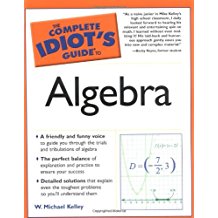Algebra: Combining Rational Expressions
Combining Rational Expressions
Since (once the fancy talking has been stripped away) rational expressions are just plain old fractions, adding or subtracting them will still require you to find a least common denominator (LCD). Unfortunately, the Bubba technique I described to calculate the LCD doesn't work once variables get tossed into the mix, so you'll need to use a more formal method.
If finding an LCD is like going to a dance, then consider this method your dressy suit pants, while the Bubba technique is a well-worn pair of jeans. Both keep you clothed, but neither is appropriate in all circumstancesit depends upon the kind of dance you're going to. There's nothing wrong with going informal if a fraction contains only numbers, but if you spot variables, you have to get all gussied up with the formal method. Actually, if given the choice, I'd prefer not going at all, since (from afar) my dance technique looks like someone walking into an electrified fence.
To calculate an LCD for a rational function, follow these steps:
- Factor all denominator polynomials completely.
- Make a list that contains one copy of each factor, all multiplied together.
- The power of each factor in that list should be the highest power that factor is raised to in any denominator.
- The list of factors and powers you generated is the LCD.
Critical Point
You can use this formal method of calculating the LCD with numbers as welljust use prime factorizations of the numbers. For instance, to calculate the LCD of 536 and 1140, start by generating the prime factorizations of the denominators.
36 = 4 · 9 = 2 · 2 · 3 · 3 = 22 · 32
40 = 5 · 8 = 5 · 2 · 2 · 2 = 23 · 5
There are three different factors: 2, 3, and 5. The LCD will be the product of those factors, if each one is raised to the highest power it achieves in the factorizations. (Since 2 appears twice, as 22 and 23, you should use the 23 version in the LCD since it represents the higher power.)
Therefore, the LCD of those fractions is:
23 · 32 · 5 = 8 · 9 · 5 = 360
Once you figure out the least common denominator, you can apply it to the problem (by forcing all the denominators to match) and then add the fractions together.
Example 2: Simplify the expression.
Solution: Begin by factoring the denominators.
There are two different factors in this problem, (x - 6) and (x + 8), so list them multiplied together: (x - 6)(x + 8); you're not finished yet, however. Notice that (x - 6) appears in both denominators, so when creating the LCD, you should use the one raised to the higher power: (x - 6)2 instead of (x - 6)1. Therefore, the LCD is (x - 6)2(x + 8). Don't multiply the factors of the LCD togetherleave them as is.
Compare each denominator with the LCD. What factor, if any, does each denominator need to match the LCD? The left fraction needs (x + 8), and the right fraction needs another (x - 6). Multiply both the numerator and denominator of each fraction by the factor or factors it needs to make its denominator complete.
Multiply only the numerators together, leaving the (now-matching) denominators alone.
Now that the fractions have common denominators, you can combine their numerators and write them together over the common denominator. Notice, though, that the second fraction is subtracted, so that preceding negative sign will need to be distributed through its entire numerator.
At this point, you should check to see if the numerator can be factored; if it can, then perhaps the fraction can be simplified. However, in this case, the numerator is prime. Feel free to leave your answer like this, unless your instructor requires you to expand the denominator by multiplying all of the terms together.
The hardest part of this problem is actually forcing the fractions to contain the least common denominator. Once that's finished, it's all downhill.
You've Got Problems
Problem 2: Simplify the expression xx2 - 4 + 8x2 - 7x + 10.

Excerpted from The Complete Idiot's Guide to Algebra © 2004 by W. Michael Kelley. All rights reserved including the right of reproduction in whole or in part in any form. Used by arrangement with Alpha Books, a member of Penguin Group (USA) Inc.
You can purchase this book at Amazon.com and Barnes & Noble.
